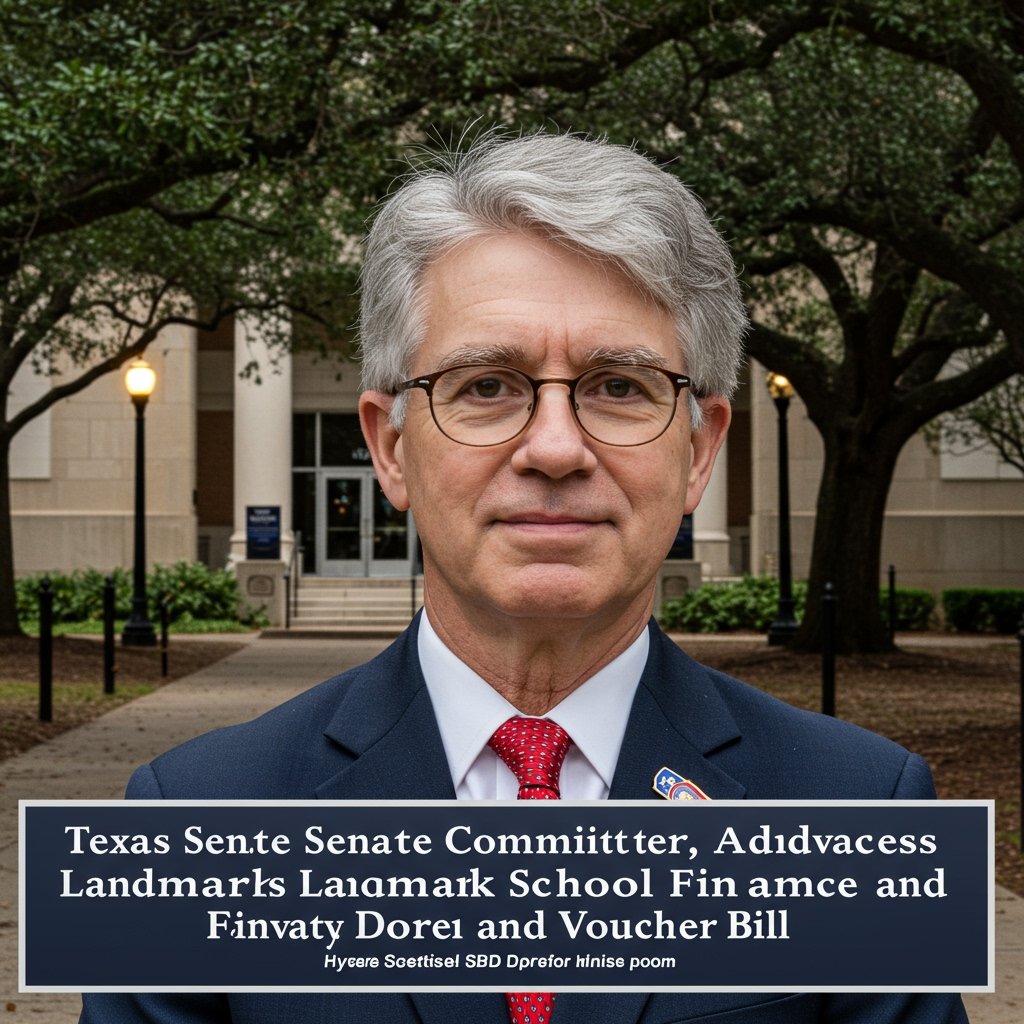Texas Senate Committee Advances Landmark School Finance and Voucher Bill
AUSTIN, TX – The Texas Senate Education Committee took a significant step on April 28th, voting to advance Senate Bill 10 (SB 10), a comprehensive legislative package poised to reshape public school funding and introduce a new education savings account (ESA) program in the state. The committee’s vote, which passed with an 8-3 margin, sends the contentious measure to the full Senate floor for further deliberation and potential passage.
At its core, SB 10 is designed to address dual objectives within the Texas education landscape. The first major component proposes a substantial overhaul of the state’s public school finance system. Utilizing a new per-student funding formula, the bill is projected to inject an additional $3 billion in state aid into public schools over the upcoming biennium. Proponents argue that this funding increase is crucial for supporting educators, enhancing school resources, and addressing the evolving needs of a growing student population across the state.
However, the bill’s most debated element is the proposed creation of a limited education savings account program. Under this program, eligible families could receive up to $7,500 per student annually to offset the costs of private education expenses, including tuition, fees, books, and other qualified educational services. The initial scope of the ESA program as outlined in SB 10 would be capped at 50,000 students. This cap and the proposed per-student amount represent a specific attempt to create a targeted program, although the exact parameters and eligibility criteria remain points of significant discussion.
The Texas Senate Education Committee meeting on April 28th saw extensive testimony from various stakeholders, including parents, educators, school administrators, and advocacy groups. The 8-3 vote reflected the deeply divided perspectives surrounding the bill. Committee members voting in favor emphasized the potential for the bill to empower parents with greater choice in their children’s education, arguing that ESAs can provide options for students in underperforming schools or those with unique learning needs that might not be fully met in their local public school.
Supporters often frame the ESA program as a matter of equity, asserting that it levels the playing field by providing financial assistance to low- and middle-income families who otherwise could not afford private education. They contend that competition from alternative education providers could also incentivize public schools to improve.
Conversely, opponents voice strong concerns that the introduction of ESAs, even a capped program, represents a diversion of public funds away from the public school system that serves the vast majority of Texas students. Critics argue that channeling state dollars to private schools lacks the same level of transparency and accountability required of public institutions. They also raise fears that a limited program could be a precursor to a much larger, statewide voucher system that could significantly erode the financial stability of public education.
During the committee hearing on April 28th, testimony from opponents highlighted potential negative impacts on rural schools and districts with limited or no private school options. Educators and public school advocates expressed alarm that the $3 billion in new public school funding, while welcome, might not be sufficient to offset the potential long-term financial strain if the ESA program expands.
The passage of SB 10 out of the Texas Senate Education Committee marks a critical juncture for the legislation. Its advancement to the full Senate signifies that it has cleared an important hurdle but faces further scrutiny and potential amendments. The debate on the Senate floor is expected to be robust, reflecting the broader political and philosophical disagreements over the role of public vs. private education and how best to serve the state’s diverse student population.
The future of SB 10 remains uncertain. While it has gained traction in the Senate, it would still need to navigate the Texas House of Representatives, where similar measures have historically faced greater resistance. The legislative process involves numerous steps, including floor debates, potential amendments, and conference committee negotiations if different versions pass each chamber.
The outcome of SB 10 could significantly impact the educational landscape for millions of Texas students and the financial structure of school districts across the state. As the bill moves forward from the Texas Senate Education Committee following its April 28th vote, policymakers, educators, parents, and the public will be closely watching its progression through the remaining stages of the legislative session, particularly the debate expected on the full Senate floor.






